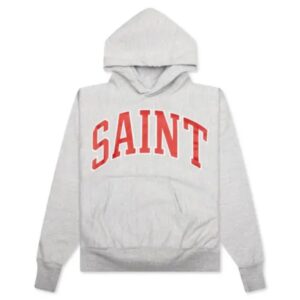When you think of wine, you probably think of celebrations, fine dining, or relaxing evenings—not marketing. But wine bottles, especially with custom labels, are an underrated and powerful tool for brand promotion. Whether you’re in hospitality, real estate, finance, or even tech, branded wine bottles can add class and memorability to your outreach.
Here’s how to make custom wine labels work for your business—strategically, creatively, and effectively.
Why Wine?
Let’s start with the basics. Why use wine as a marketing tool?
-
It’s a gift people actually want
Wine doesn’t feel like a promo item. It feels like a thoughtful gift. That makes it more memorable than pens, notepads, or yet another USB stick. -
It sticks around
Unlike flyers or digital ads that disappear in seconds, a bottle of wine usually sits on a shelf or desk for days, weeks, or even months. That’s prolonged exposure to your brand. -
It’s associated with positive moments
Birthdays, anniversaries, closing deals—wine is present at high points. If your brand is part of that, you’re building goodwill by association.
Step 1: Define the Goal
Before you slap your logo on a bottle, define the purpose. What do you want the wine to do?
-
Are you thanking loyal clients?
-
Warming up leads?
-
Celebrating a partnership?
-
Promoting a product launch?
-
Adding flair to an event?
Clarity upfront helps you make smarter decisions later—about messaging, label design, quantity, and wine selection.
Step 2: Choose the Right Wine
Don’t cheap out here. People notice quality, especially with wine. You don’t need to break the bank, but make sure the bottle aligns with your brand image.
-
Corporate/Financial Services? Go with a classic cabernet or merlot.
-
Creative Industries? Maybe a funky natural wine or local blend.
-
Tech/Startups? A trendy rosé or sleek sparkling wine could work.
If possible, sample a few options before committing. The wine should be good enough that the recipient wants to open and enjoy it—not regift it or toss it.
Step 3: Nail the Label Design
Here’s where the magic happens. The label is your brand’s face on the bottle. It’s what people will remember. Treat it like an ad, a business card, and a conversation starter all in one.
Key Elements to Include:
-
Your Logo
It doesn’t have to dominate the design, but it should be clearly visible. -
A Catchy Tagline or Message
Make it relevant to the occasion. Avoid generic phrases like “Cheers!” unless paired with something more personal. -
Contact Info or QR Code
This isn’t always necessary, but if the bottle is part of a campaign (e.g., real estate agents gifting bottles to clients), include a way to follow up. -
Custom Graphics or Brand Colors
Keep it on-brand but creative. Think minimal, clean, and eye-catching. -
Personalization (Optional)
Printing a recipient’s name or a special message can add a wow factor—especially in small batches.
Pro Tip: Less Is More
You’re not designing a wine label for a grocery shelf. You’re designing a branded experience. Don’t overstuff the label. Keep it elegant and readable.
Step 4: Timing and Delivery
The when and how of wine gifting matter just as much as the what.
Use Cases That Work:
-
Holiday Gifts – Custom wine bottles make excellent client or partner gifts.
-
Event Favors – A branded bottle guests take home is better than any tote bag.
-
Deal Closures – Celebrate contracts or milestones with a premium touch.
-
Onboarding or Retention – Surprise top clients or new hires with a welcome gift.
-
Fundraisers or Auctions – Add a prestige element with branded wine at charity events.
Delivery Matters:
-
Hand-deliver if possible. Adds a personal touch.
-
Use custom packaging. A simple box or gift bag with your branding completes the presentation.
-
Include a short, handwritten note. Builds rapport and makes it feel less like a transaction.
Step 5: Stay Compliant
Alcohol laws vary by state and country. If you’re mailing wine or using it in promotions, make sure you’re in the clear.
-
Work with a licensed winery or distributor that can handle compliance.
-
If you’re gifting to clients, know your industry’s limits (some sectors cap gift values).
-
Avoid mass unsolicited wine shipments—focus on warm leads or existing relationships.
Step 6: Track the Impact
Custom wine bottles are not just a branding play—they can generate real business results.
Here’s how to measure the impact:
-
Include a unique QR code leading to a campaign landing page.
-
Track referrals or mentions tied to the gift (“Saw your wine at the gala!”).
-
Follow up directly with recipients to get feedback.
-
Monitor social media—people often post unique gifts like custom wine bottles.
Bonus: Add Social Proof
Encourage recipients to share photos with the bottle on LinkedIn or Instagram. Not only does this amplify your brand, but it also turns your clients into brand advocates.
Make this easier by:
-
Including a branded hashtag.
-
Making the bottle visually striking.
-
Running a mini giveaway or campaign (“Post a photo with our bottle and tag us to win…”)
Final Thoughts
In a world flooded with digital noise, tactile, thoughtful marketing stands out. Custom wine bottles aren’t just fancy swag—they’re strategic tools to build relationships, reinforce brand identity, and spark conversations.
When done right, they deliver impact that lasts longer than any email blast or social post. So if you’re looking to impress, influence, or just stand out—skip the stress balls and send the cabernet.




